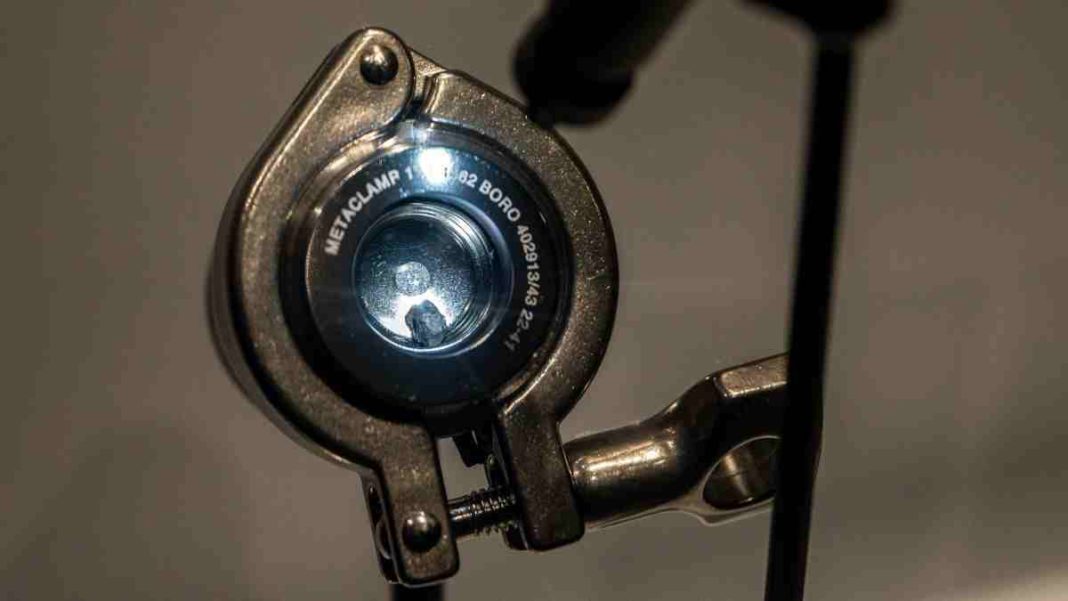UNITED STATES: In a historic event, a substantial crowd gathered at the National Museum of Natural History to witness the unveiling of a fragment of the asteroid Bennu, brought back to Earth by NASA’s OSIRIS-REx mission.
The OSIRIS-REx spacecraft completed an astonishing 1.4-billion-mile journey, safely landing its sample return capsule in Utah on September 24.
Tim McCoy, the museum’s curator of meteorites, expressed his excitement, stating, “What we are doing today is a milestone. It is a start in where we are going, which is trying to use this sample to understand our unique planet.”
About 50 individuals, including the press and members of the public, gathered to be among the first to view the Bennu sample, displayed within a stainless steel bottle in a pure-nitrogen environment to preserve its pristine condition.
The exhibit also featured scale models of the ULA Atlas V rocket and the Lockheed Martin-built OSIRIS-REx probe that played pivotal roles in the mission.
The exhibit’s backdrop poses a profound question, “Could this fragment of an asteroid hold information about the beginnings of our solar system and the formation of life on Earth?”
Scientists aim to unlock the secrets of the Solar System’s origins, Earth’s oceans, and life itself through the study of the water-rich minerals and carbon-rich molecules within the Bennu fragment.
A CT scan revealed that the stone, labelled OREX-800027-0, is composed of numerous smaller rocks fused, showcasing signs of heavy alteration by water, resulting in the presence of clays, iron oxides, iron sulfides, carbonates, and carbon.
McCoy shared insights into the selection process for the displayed rock, emphasizing the need for durability and photogenicity. The chosen fragment, a perfect representation of the material brought back, now stands as a testament to this monumental achievement.
In addition to the showcased stone, the Smithsonian received another Bennu fragment for further scientific examination. Two more rocks are slated for display at the University of Arizona’s Alfie Norville Gem & Mineral Museum and Space Center Houston in Texas, marking the continuation of this groundbreaking exploration.
The opening dates for these exhibits are anticipated soon, with November 15 as a potential launch date.
Also Read: NASA’s Lucy Spacecraft Achieves Milestone with Successful Flyby of Asteroid ‘Dinky’



